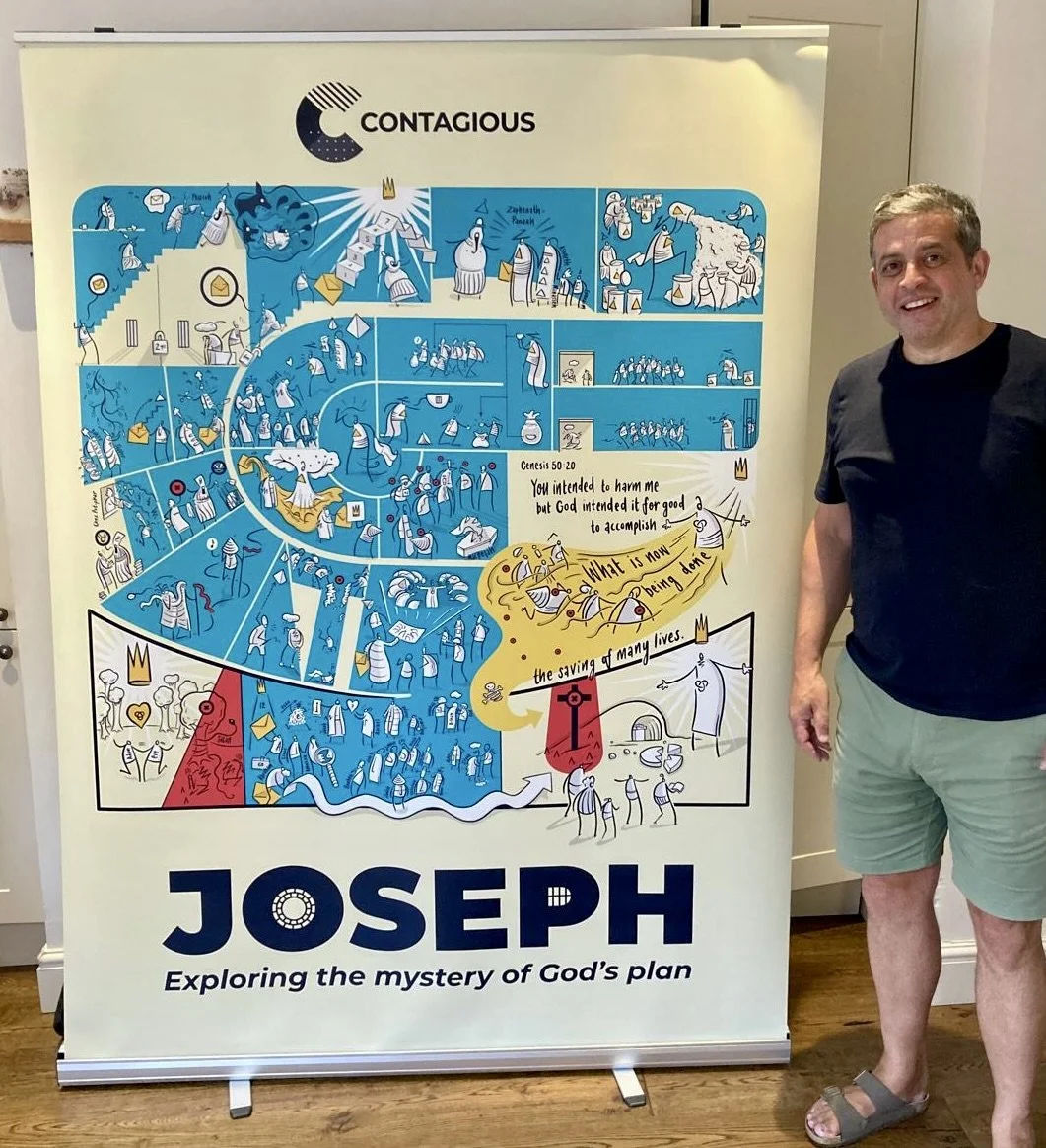Previously I wrote about my efforts to reinterpret the story of Joseph into a visual form. Most recently I have taken that material and compressed it into an infographic that can be broken up into 30+ separate pieces. The idea is to use this with approximately 1000 teenagers to explain the story this summer. It will be printed large and broken up for booklets/slideshows.
Here is a timelapse (if you are into that kind of thing) which will hopefully prove beyond doubt that it wasn’t created with AI.








